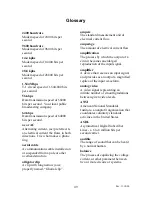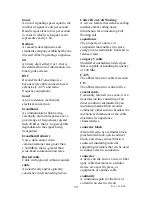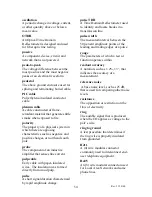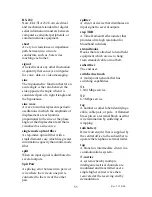
Rev. 11/10/00
52
electrostatic induction
The process of inducing static electric
charges on a body by bringing it near
other bodies that carry high
electrostatic charges.
Ethernet
®
A transmission protocol for packet
switched local area networks.
Ethernet is a registered trademark of
the Xerox Corporation.
F connector
A connector used by the television
industry to connect coaxial cable to
equipment.
F 81
Used by the television industry to
splice two F connectors.
facility
Any one of the elements of the
physical telephone plant required to
provide service, such as switching
systems, cables, and microwave
transmission systems.
farad
The standard unit of capacitance
equal to the value of a capacitor with
a potential of one volt between its
plates when the charge on one plate is
one coulomb and there is an equal
and opposite charge on the other
plate. Because a farad is a large
value, it is usually expressed in micro
or picofarads.
fault
A condition that causes a device, a
component, or an element to fail to
perform in the required manner, e.g.,
shorts, opens, etc.
fault tolerance
The capability of a system to
continue to operate in the event of a
hardware or software failure.
feeder cable
Cable from a CO to a cross connect
box.
frequency
The number of complete periodic
wave cycles that occur within a given
length of time.
gauge
A measure of wire diameter. The
lower the wire gauge number, the
thicker the wire.
ground
An electrical connection to earth or to
a common conductor usually
connected to earth whose purpose is
to protect the cables within.
grounded
When equipment is connected to
earth or to a common connector to
earth.
HDSL
High bit rate digital subscriber line.
High speed data transmission at 1.544
Mbps.
headend
The master CATV distribution center
from which satellite and distant
broadcast systems are received,
converted and transmitted as TV
channels.
high resistance open
Wire or connection point that has
deteriorated by corrosion to the point
that it is almost open.
























